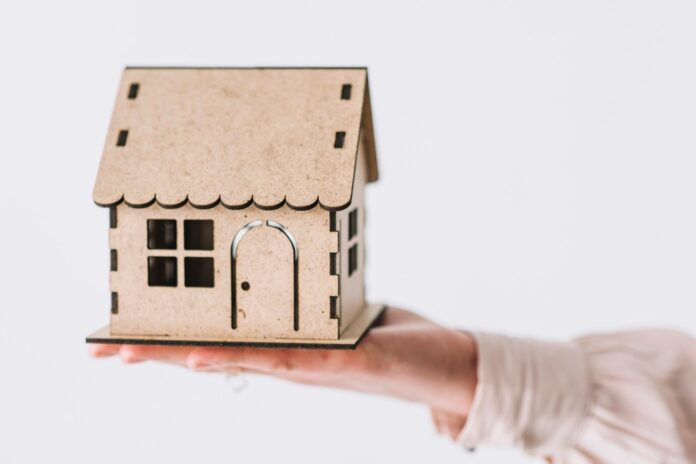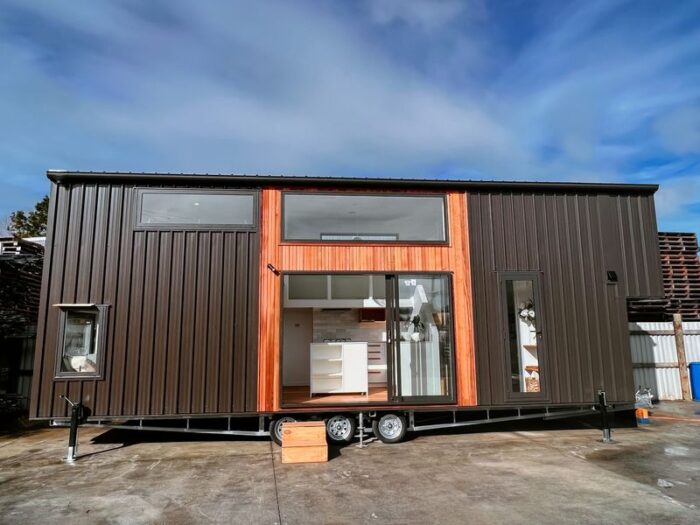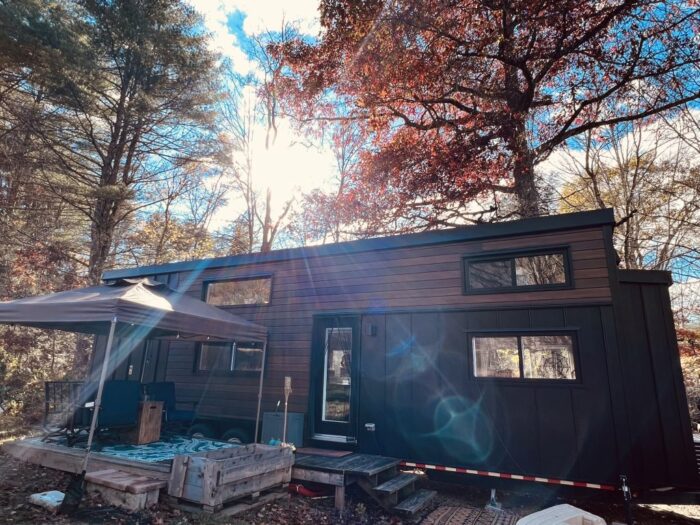
When you start pondering the notion of downsizing to a tiny home, the array of choices might seem overwhelming. The decision between purchasing an existing tiny home or constructing one from scratch encapsulates not just financial considerations but also lifestyle preferences, long-term objectives, and personal values.
This exploration aims to delve into the intricacies of both options, helping you discern the path that aligns best with your aspirations.
Allure of Tiny Homes
Tiny houses for sale have captured the imagination of many, offering a lifestyle that prioritizes simplicity, mobility, and reduced environmental impact. These diminutive dwellings typically measure between 100 to 400 square feet, challenging the conventional belief that bigger is better. The appeal often lies in their potential to foster a minimalist lifestyle, reduce living expenses, and increase the freedom to relocate easily.
The Journey to Purchasing a Tiny Home
For those inclined to avoid the challenges of construction, purchasing a pre-built tiny home offers a convenient and speedy path to downsizing. This option allows immediate enjoyment without the wait or the need for decision-making in the construction process. Pre-built models come in various designs, allowing you to choose one that fits your aesthetic and functional needs.
Pros of Purchasing:
- Speed: Buying a pre-built home means you can potentially move in right after purchase, bypassing the lengthy process of building.
- Convenience: There is no need to engage in the intricate planning and execution involved in building. Everything from design to compliance with building codes is already handled.
- Predictability: Costs are generally upfront and fixed, providing clarity on the financial aspect without unexpected expenses.
Cons of Purchasing:
- Limited Customization: What you see is usually what you get. Modifications can be difficult and costly.
- Compromise: You might have to compromise on layout, materials, or features, as the choices are limited to what’s available in the market.
- Depreciation: Like most vehicles (and some argue, like conventional homes), tiny homes can depreciate over time, especially if they are portable.
The Adventure of Building Your Own Tiny Home
Building your tiny home is an adventure that brims with personal satisfaction and customization. It presents an opportunity to tailor every aspect of your living space to your precise needs and preferences. From selecting the right materials to designing a layout that mirrors your lifestyle, the building process can be profoundly rewarding.
Pros of Building:
- Customization: Every detail, from the floor plan to the type of insulation, can be customized. This freedom allows the home to reflect your personal taste and needs comprehensively.
- Personal Growth: The process can be a journey of personal discovery and skill development. Many who choose to build their tiny home learn a lot about construction, self-sufficiency, and problem-solving.
- Quality Control: You have control over the materials and building standards, which can lead to a higher-quality home that meets all your expectations.
Cons of Building:
- Time Investment: Building a home, even a tiny one, can take a significant amount of time, from planning to execution.
- Stress: The responsibility of managing a construction project, even on a small scale, can be stressful. This includes dealing with permits, sourcing materials, and hiring contractors.
- Cost Variances: While you might start with a budget, unforeseen expenses can arise, leading to cost overruns.
Financial Considerations

Cost is a critical factor in deciding whether to buy or build. Buying a tiny home typically requires a lump sum payment or financing similar to purchasing a vehicle. Prices can vary widely based on size, materials, and features but generally range from $30,000 to $60,000 for standard models.
Building a tiny home, on the other hand, often allows for more controlled spending. You can phase out expenses, purchasing materials and services as needed. However, the final cost can be unpredictable and potentially exceed initial estimates if complications arise during construction.
Lifestyle Implications
Your lifestyle choices and future plans play a crucial role in this decision. If you value complete control over your living environment and have a specific vision for your home, building might be the right choice. However, if you prioritize convenience and quick settlement, purchasing a pre-built home would be more suitable.
Long-term Goals
Think about your long-term goals. Are you looking to travel frequently with your home? Do you envision living in this space indefinitely, or is it a stepping stone to something else? Your answers might influence your choice significantly.
Navigating Legal and Zoning Challenges

When deciding whether to buy or build a tiny home, it’s crucial to consider the legal and zoning challenges that might arise. Each municipality has different regulations regarding tiny homes, particularly if you’re looking at a tiny house on wheels (THOW) versus a foundation-based tiny home. These rules can impact everything from where you can place your home to the type of utilities you can connect to.
For those buying a pre-built tiny home, manufacturers often provide guidance on zoning laws and may even help facilitate the process of getting your home situated legally. However, this doesn’t absolve buyers from doing their own due diligence. It’s important to have direct conversations with local zoning boards and review the specific regulations that apply to your chosen location.
On the other hand, if you decide to build your tiny home, you’ll need to engage more deeply with zoning laws and building codes from the outset. This involves securing permits, ensuring that your design meets local codes, and frequently, attending zoning board meetings to get approval for your plans. While this can be more labor-intensive, it also offers a deeper level of engagement with the legal landscape, potentially leading to better compliance and fewer surprises down the road.
Environmental Impact and Sustainability
One of the compelling reasons people choose tiny homes is their reduced environmental footprint. Both buying and building offer opportunities to live more sustainably, but they do so in different ways.
When you purchase a tiny home, you can look for homes that use sustainable materials and energy-efficient systems. Many builders now offer eco-friendly options like solar panels, composting toilets, and rainwater catchment systems. These features can help reduce your environmental impact and lower ongoing utility costs.












